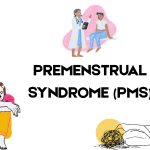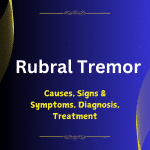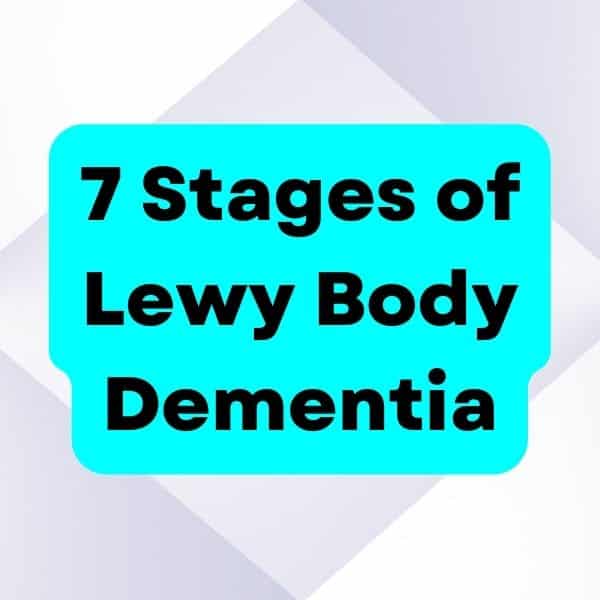LBD is a degenerative brain condition affecting millions of people worldwide. It is one of the leading causes of dementia, affecting over one million people in the United States alone. LBD is linked to abnormal deposits of the protein alpha-synuclein in the brain, which affects chemicals involved in memory, learning, mobility, behavior, and mood.
Symptoms
LBD can present with a range of symptoms, making diagnosis difficult. Visual hallucinations, mobility disorders, poor regulation of body functions, cognitive impairments, sleep difficulties, fluctuating attention, depression, and apathy are some of the most prevalent indications and symptoms of LBD.
7 Stages of Lewy Body Dementia
Stage 1: No Cognitive Decline
The first stage of LBD is characterized by no cognitive decline. During this stage, the individual does not experience any significant cognitive symptoms, and their behavior and physical abilities remain unchanged.
Stage 2: Mild Cognitive Decline
The second stage of LBD is characterized by mild cognitive decline. During this stage, the individual may experience slight memory lapses, difficulty with concentration, and mild changes in behavior. These symptoms may not be noticeable to others, and the individual may still be able to perform their daily activities without assistance.
Stage 3: Moderate Cognitive Decline
The third stage of LBD is characterized by moderate cognitive decline. During this stage, the individual may experience more significant memory loss, confusion, and difficulty with decision-making. They may also have trouble with language and communication and may need assistance with daily activities.
Stage 4: Mild Dementia
The fourth stage of LBD is characterized by mild dementia. During this stage, the individual will have a noticeable cognitive decline and may require assistance with daily activities. They may experience significant memory loss, difficulty with language and communication, and changes in behavior, such as apathy or depression.
Stage 5: Moderate Dementia
The fifth stage of LBD is characterized by moderate dementia. During this stage, the individual will experience more significant cognitive decline and will require assistance with daily activities. They may have trouble recognizing familiar people or places, and they may experience hallucinations or delusions.
Stage 6: Severe Dementia
The sixth stage of LBD is characterized by severe dementia. During this stage, the individual will have profound cognitive decline and will require extensive assistance with daily activities. They may no longer be able to communicate verbally and may experience significant changes in behavior, such as aggression or agitation.
Stage 7: End-Stage Dementia
The seventh and final stage of LBD is characterized by end-stage dementia. During this stage, the individual will be completely dependent on others for their care. They may no longer be able to eat, walk, or communicate and may be bedridden. In some cases, individuals may experience life-threatening complications, such as pneumonia or sepsis.
Criteria for Lewy Body Dementia:
Diagnosis of LBD can be difficult since its symptoms are frequently confused with those of other brain diseases or psychiatric disorders. LBD cannot be diagnosed with a single test. To rule out other probable causes and identify signs of LBD, doctors employ a combination of medical history, physical examination, neurological exams, cognitive tests, brain imaging, and laboratory tests. Dementia that begins after the age of 50, gradual cognitive deterioration, visual hallucinations, and parkinsonism are all diagnostic criteria for Lewy body dementia.
Difference between Lewy Body Dementia and Alzheimer’s:
Because both are forms of dementia, LBD and Alzheimer’s disease are sometimes mistaken. There are, however, some significant distinctions between the two circumstances. In LBD, symptoms such as mobility abnormalities and hallucinations develop earlier in the illness process, whereas memory loss is the first sign of Alzheimer’s disease. Furthermore, cognitive symptoms in LBD change more than in Alzheimer’s disease.
Parkinson’s Disease and Lewy Body Dementia: Parkinson’s disease and LBD are related conditions. In fact, many people with Parkinson’s disease will go on to develop LBD. Both conditions are characterized by abnormal deposits of alpha-synuclein in the brain. However, in LBD, the deposits are more widespread and tend to be more concentrated in the outer layers of the brain.
Prevention:
Although the exact cause of LBD is not yet known, there are some lifestyle changes that may help reduce the risk of developing the disease. Some of these include:
- Eating a healthy diet: A diet rich in fruits, vegetables, whole grains, lean protein, and healthy fats may help reduce the risk of developing LBD.
- Regular exercise: Regular physical activity may help reduce the risk of developing LBD. Exercise can help improve blood flow to the brain, which may help keep brain cells healthy.
- Getting enough sleep: Adequate sleep is essential for brain health. Lack of sleep or poor quality sleep may increase the risk of developing LBD.
- Managing stress: Chronic stress may increase the risk of developing LBD. Managing stress through techniques like meditation, deep breathing, or yoga may help reduce the risk.
- Staying socially engaged: Social isolation may increase the risk of developing LBD. Staying socially engaged and participating in activities with others may help reduce the risk.
FAQs
Q: What are the early signs of Lewy body dementia?
A: The early signs of Lewy body dementia include visual hallucinations, sleep disturbances, movement disorders, and changes in cognition and behavior.
Q: Is Lewy body dementia a progressive disease?
A: Yes, Lewy body dementia is a progressive disease that worsens over time. The symptoms become more severe as the disease progresses through its stages.
Q: How is Lewy body dementia diagnosed?
A: Lewy body dementia is diagnosed through a combination of medical history, physical examination, neurological tests, cognitive tests, brain imaging, and laboratory tests to rule out other possible causes and identify features of LBD.
Q: What are the treatment options for Lewy body dementia?
A: There is no cure for Lewy body dementia, but treatment can help manage symptoms and improve quality of life. Treatment may involve medications, nonpharmacological therapies, lifestyle changes, and supportive care.
Q: What are the 7 stages of Lewy body dementia?
A: The 7 stages of Lewy body dementia are:
- No cognitive decline
- Mild cognitive decline
- Moderate cognitive decline
- Moderate to severe cognitive decline
- Severe cognitive decline
- Very severe cognitive decline
- End-stage or late-stage Lewy body dementia
Q: What are the common symptoms of each stage of Lewy body dementia?
A: The common symptoms of each stage of Lewy body dementia can vary, but generally include a decline in cognitive and physical function, changes in mood and behavior, and worsening movement and sleep problems.
Q: Is it possible to prevent Lewy body dementia?
A: While there is no guaranteed way to prevent Lewy body dementia, some lifestyle changes such as regular exercise, a healthy diet, and stress management can reduce the risk of developing dementia. Additionally, avoiding head injuries and reducing exposure to toxins may also help prevent the disease.
Latest Posts
- Premenstrual Syndrome (PMS) Explained: Powerful Relief Strategies for 2026

- Magnetic Seizure Therapy (MST): A Breakthrough in Psychiatric Treatment in 2025

- AIIMS New Delhi, NIMHANS Bengaluru, JIPMER Puducherry: No Leaves for Healthcare Workers Amid Tensions

- Narcissistic Personality Disorder in 2025: Unveiling the Hidden Struggles and Empowering Recovery

- Conquering Rubral Tremor: Unveiling Effective Treatments in 2025

